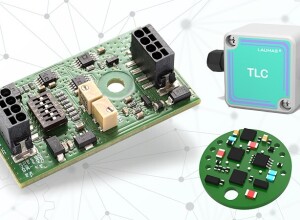[Article]: Main Types of Weighing Equipment Used in Laboratories
Weighing plays a vital role in laboratories, where precision and accuracy are essential for reliable results. From routine measurements to ultra-sensitive analyses, different types of lab balances are used depending on the application. Below are the most important types of laboratory weighing equipment and their specific uses.
1. Analytical Balance
Used for: Highly precise weighing in chemical, pharmaceutical, and environmental labs
Readability: 0.1 mg (0.0001 g)
Key Features: Draft shield, internal calibration, anti-vibration design
Analytical balances are essential for weighing small sample quantities where the highest level of precision is required. They are sensitive to air currents, vibrations, and temperature changes, making proper setup crucial.
2. Precision Balance (Top-loading Balance)
Used for: General lab weighing of reagents, solutions, and samples
Readability: 0.001 g to 1 g
Key Features: Higher capacity, faster stabilization, user-friendly interface
Precision balances are more robust than analytical balances and ideal for daily tasks where slightly lower precision is acceptable but reliability is still key.
3. Microbalance and Ultramicrobalance
Used for: Research requiring extremely small mass measurements
Readability: 1 µg (0.000001 g) or better
Key Features: Ultra-sensitive, requires temperature and vibration control
Microbalances are used in advanced research fields such as nanotechnology, material science, and pharmaceutical R&D, where even the smallest variation matters.
4. Moisture Analyzer
Used for: Determining moisture content in samples such as food, chemicals, and pharmaceuticals
Readability: 0.001 g typical
Key Features: Combines balance with heating element for real-time moisture loss analysis
Moisture analyzers are essential for quality control and are commonly found in food labs, plastic manufacturing, and agriculture research labs.
5. Semi-Micro Balance
Used for: Precise weighing of small samples, less sensitive than a full microbalance
Readability: 0.01 mg (0.00001 g)
Key Features: Balanced between high precision and ease of use
Ideal for laboratories that need more precision than a standard analytical balance without the full complexity or cost of a microbalance.
6. Portable Laboratory Scale
Used for: Fieldwork, mobile labs, or educational environments
Readability: 0.01 g to 1 g
Key Features: Battery-powered, lightweight, easy to transport
Perfect for situations that require weighing outside of traditional lab settings, such as environmental monitoring or on-site testing.
7. Laboratory Hanging Scale
Used for: Weighing irregular or suspended items
Readability: Varies (typically 0.1 g or 1 g)
Key Features: Hook or suspension system, compact and robust
Less common in laboratories but useful for weighing bags, biological specimens, or suspended materials.
8. Anti-Vibration Table with Balance System
Used for: Stabilizing sensitive balances in high-precision environments
Key Features: Dampens external vibration, compatible with micro- and analytical balances
These tables are not scales themselves, but are essential accessories that ensure measurement stability in precision labs.
9. Density Determination Kit
Used for: Measuring the density of liquids or solids using a compatible balance
Key Features: Buoyancy-based method, typically attached to analytical balances
Common in material science and quality control labs, these kits help determine purity or material identity through density measurement.
10. Checkweigher for Laboratory Pilot Lines
Used for: Weighing samples in small-scale production environments or pilot labs
Key Features: High-speed, integrated with lab-scale production systems
Useful in pharmaceutical or nutraceutical R&D, where weight consistency in pre-production samples is critical.
Conclusion
Choosing the right laboratory balance depends on your application, required precision, and sample type. From routine mass measurement to ultra-sensitive research weighing, the modern laboratory offers a wide range of tools for accurate and reliable results.
Looking for the Right Scale for Your Lab?
At Weighing Review you will find articles and other contents about all type of scales and other weighing solutions such as technical articles, videos, case studies and guides. You can also search the Suppliers Directory and Marketplace to find the best supplier and product for your weighing needs.



























Interested? Submit your enquiry using the form below:
Only available for registered users. Sign In to your account or register here.